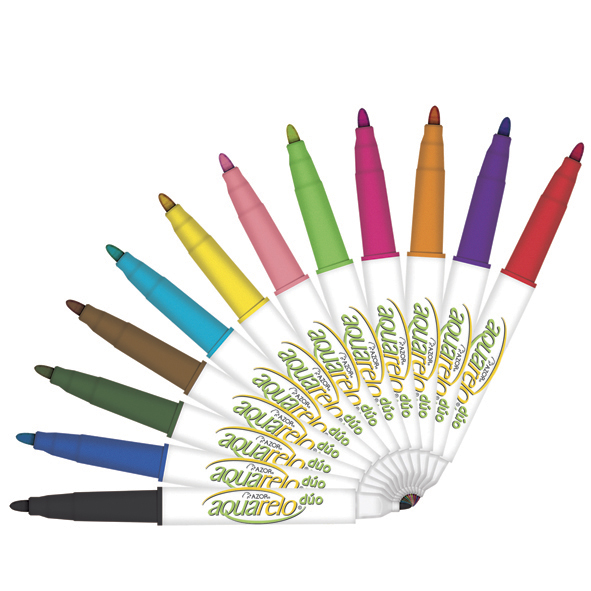

The B&W image format has only two colors for represent each pixel: the black and the white. According to that, we represent a RGB value using only one value instead of three. In digital images, a gray-level image is the one that each pixel is represented by a gray color between the black and white colors, where each gray level has the RGB components with the same value. Generally speaking, there is a certain confusion about the concepts of gray-level and B&W images. Some MSX graphic editors make use of B&W images that looks like those hand-made sketches.
#Aquarelo for pc Pc#
The Storytelling workshops were proposed and conducted by researcher Marleny Luque Carbajal as part of her doctorate, in the context of the Socioenactive Systems project.The project MSX Sketch Tools aims at developing some tools to convert PC GIF format to shapes compatible with MSX black & white image editors such as Graphos III, Aquarela, Page-Maker and Dynamic Publisher. The children had to program the Robot Wolf using the TaPrEC+mbot to get to the objects and discover the fragments of the story. The NFC tags had recordings of fragments of a story created by the gang where the Robot Wolf (mBot) was the protagonist. In the third workshop, we created a programming scenario with objects with NFC tags. Each NFC tag was engraved with a keyword from the “Little Red Riding Hood”-inspired story the kids created. In the second workshop we carried out the Memory Game, a playful game with 12 cards equipped with NFC tags. Each voice record was associated with an NFC tag.
#Aquarelo for pc mp4#
The class created a story, then the fragments of the story were narrated by the children and recorded in mp4 format. NFC is a wireless technology for exchanging data over short distances and aimed at mobile devices.įor the first workshop, with the collaboration of children and teachers, we created the Magic Book, a storytelling kit that supports the creation of meaningful stories. Throughout the second half of 2018, we held storytelling workshops exploring Near Field Communication (NFC) technology. The tangible programming workshops were proposed and conducted by researcher Marleny Luque Carbajal as part of her doctorate, in the context of the Socioenactive Systems project. The tasks were different for each workshop: in the first workshop, the children had to program the robot to enter a garage (a little house built of cardboard) in the second workshop, the children had to program the robot to cross a (cardboard) bridge and in the third workshop, the children had to create their own programming scenario.


After a brief demonstration of how each block of programming works, we explained the task they had to complete, and then the children began to create tangible programs.
#Aquarelo for pc how to#
We started the workshop with the children, introducing them to the 'TaPrEC+mBot' environment and explaining how to create a tangible program. The teachers suggested using only the following programming blocks: FORWARD, BACKWARD, TURN LEFT, TURN RIGHT. In this way, the teachers collaborated in the planning of the activities that were developed in the workshops with the children. We conducted pilot workshops with preschool teachers so that they could have their own experience with the 'TaPrEC+mBot'. At the end of the activity, the system displays the “ grand finale”, a compilation of photos taken by the participants during the session, to the sound of the theme music and animation elements.

The animation sequence of the digital music scene is chosen among all the children who select a toy connected to each part of the music, a bird, a boat, a castle, a sun or an airplane, among others, and present it to the computer camera. Participants choose avatars to represent them in the scenarios, being able to report their emotions to friends and the system with the help of emoticons. In the system, children use homemade toys, enriched with QR codes to interact with each other in animated scenarios based on images from the song Aquarela ( Vinícius de Moraes, Toquinho, Guido Morra and Maurizio Fabrizio, 1983). The Aquarela Virtual system was used in parallel with a video conferencing tool in which children were able to talk to each other and to the researchers remotely supporting the experiment, while two researchers were present on site.


 0 kommentar(er)
0 kommentar(er)
